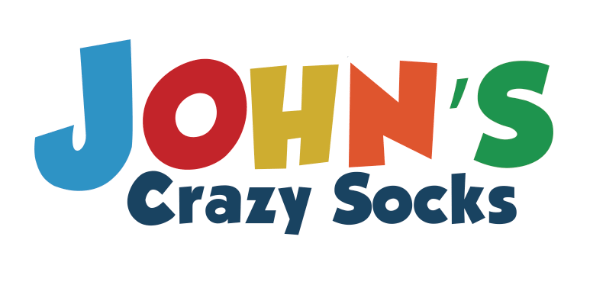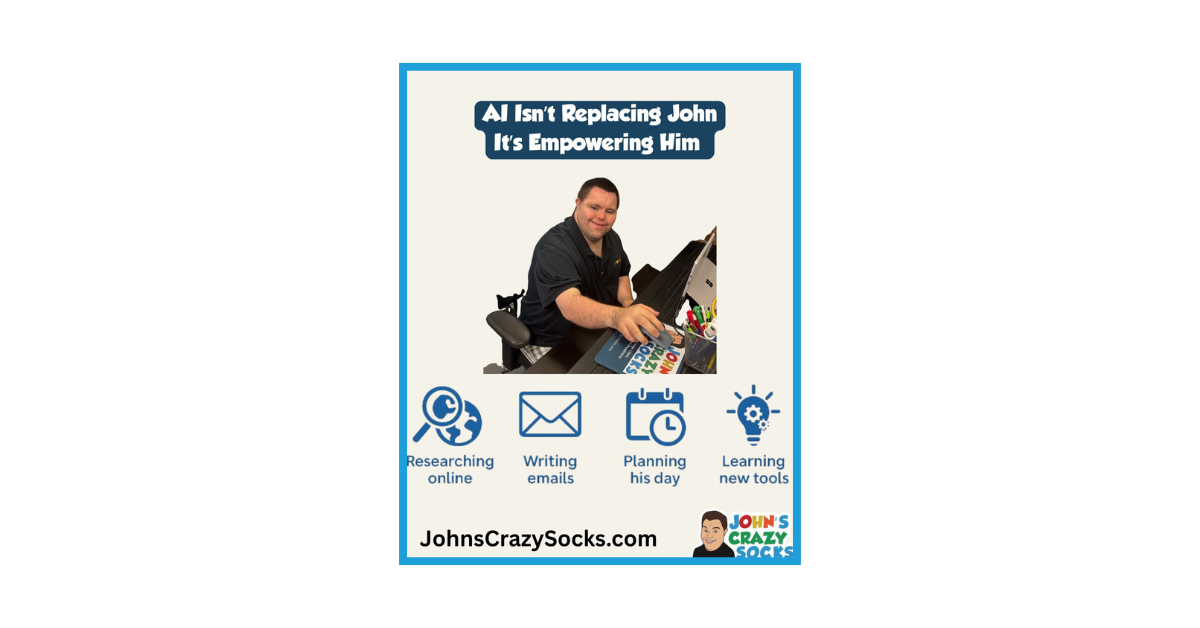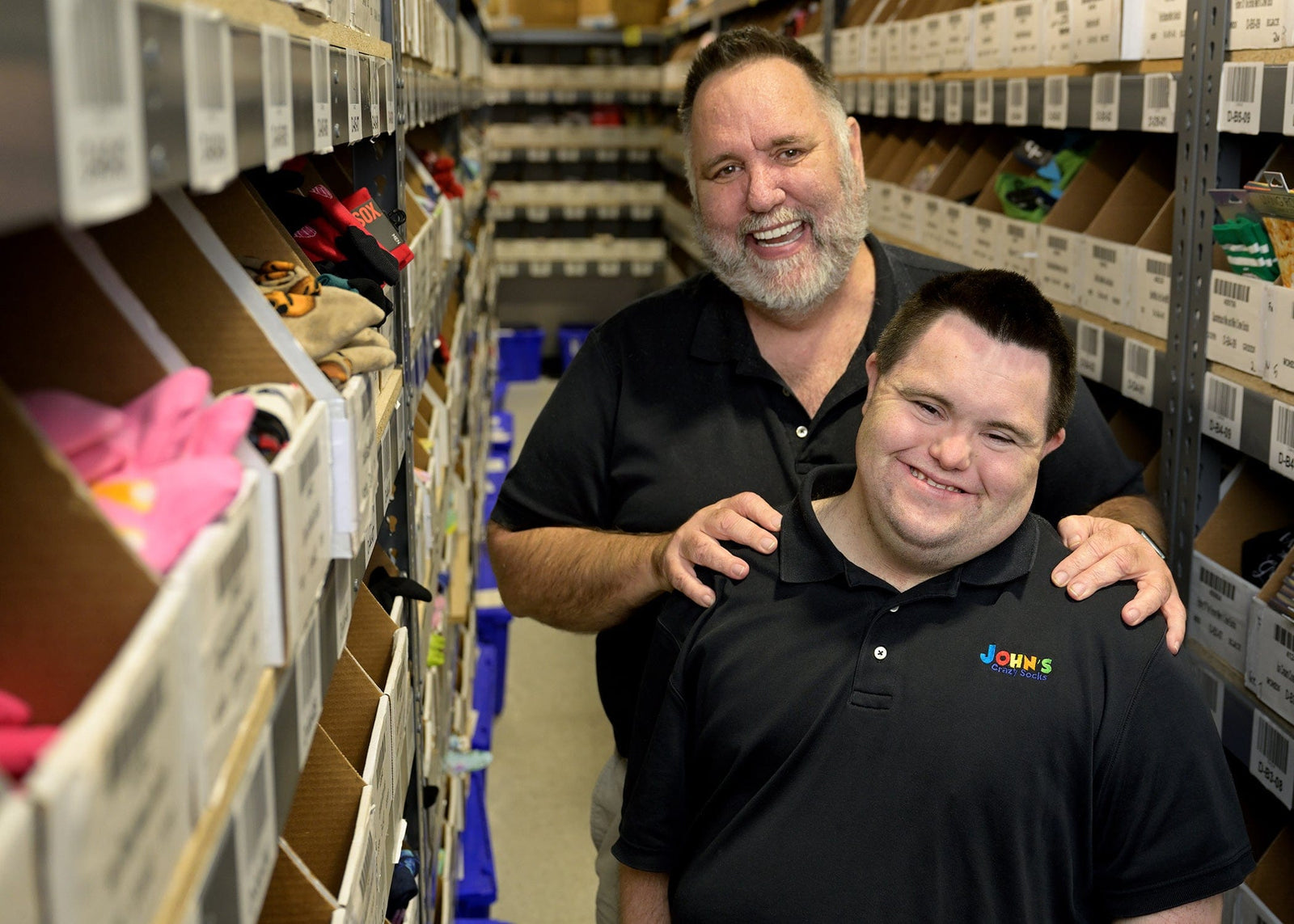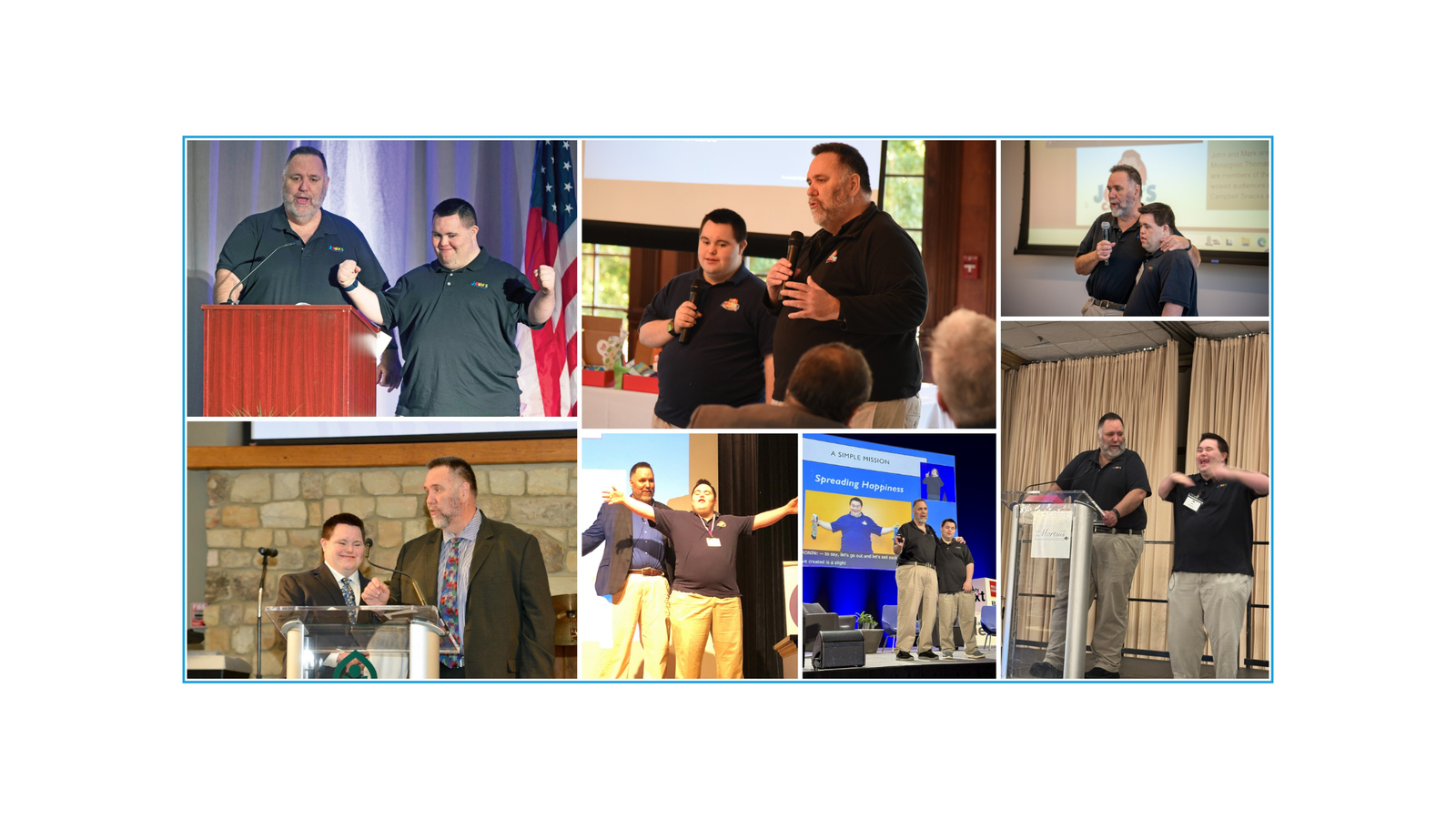As artificial intelligence (AI) becomes increasingly common in everyday life, some fear it may replace the very kinds of structured, routine jobs that have long offered employment to people with intellectual developmental disabilities (IDD). But that narrative misses a bigger story: AI is not just a threat; it’s also an opportunity. For people like John Cronin, co-founder of John’s Crazy Socks and a man with Down syndrome, AI is proving to be an empowering tool that enables greater independence, learning, and productivity.
A New Way to Do Research
John calls it “doing research.” Whether he’s trying to find the best restaurant in a city he’s visiting or learning more about a movie that mentions a historical event, John dives into online exploration. He now uses tools like Perplexity, an AI-powered search assistant, to help him dig deeper and get more complete, accurate answers. Instead of clicking through dozens of links or struggling with complex language, John gets a clear, concise summary that helps him understand and explore further.

Writing with Confidence
John regularly communicates via email. Yet, like many people with intellectual developmental disabilities, he faces challenges with grammar, sentence structure, and word choice. Rather than holding back, John speaks his message aloud to ChatGPT. The AI listens, helps refine his message, and outputs a cleaner, more polished version. The core message is still all John, just clearer and easier for others to read.
Organizing a Busy Life
John wears many hats: entrepreneur, speaker, athlete, and advocate. With so many commitments, organizing his day can be a challenge. Now, he tells ChatGPT everything he needs to do, and the AI helps lay out a structured plan, breaking tasks into manageable steps and creating a schedule that supports his independence.
Step-by-Step Learning
From mastering new iPhone features to using Microsoft Word or Outlook more effectively, John turns to AI for step-by-step guidance. Instead of waiting for someone to walk him through a process, he can now ask ChatGPT or Perplexity how to do something and get clear, instructional answers. This builds his confidence and helps him keep learning.
“I like using it,” John says. “It helps me figure things out. It gives me good answers.”

A Tool for Empowerment, Not Replacement
These are just a few ways AI is becoming an ally for people with intellectual developmental disabilities. Others may use AI to:
-
Create visual schedules or routines
-
Learn new vocabulary or improve speech
-
Draft social stories for navigating new experiences
-
Get reminders and task nudges throughout the day
-
Generate ideas for work projects or creative hobbies
Instead of replacing people, AI tools like ChatGPT and Perplexity are helping people like John do more on their own. It’s not about making everyone the same; it’s about giving each person the tools they need to thrive.

At John’s Crazy Socks, inclusion is baked into everything we do. More than half of our colleagues have a differing ability, and the company’s success proves what’s possible when people are given the tools, support, and belief they need to succeed. We are now introducing Ai tools throughout our organization. They are not replacing people; they are letting people do more
As John says, “The keys to happiness are gratitude and doing for others.” With the help of AI, he’s doing even more, for himself, for his business, and for a world that needs more inclusion and joy.




